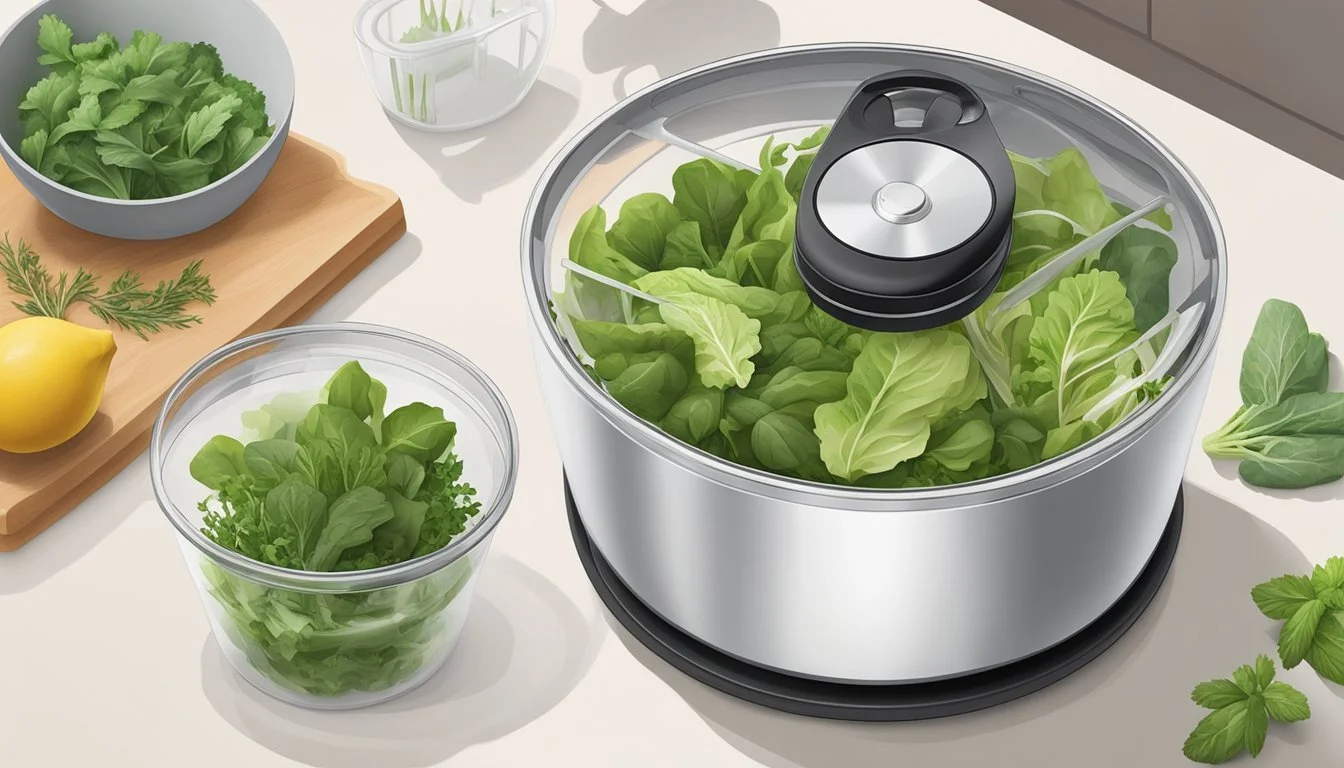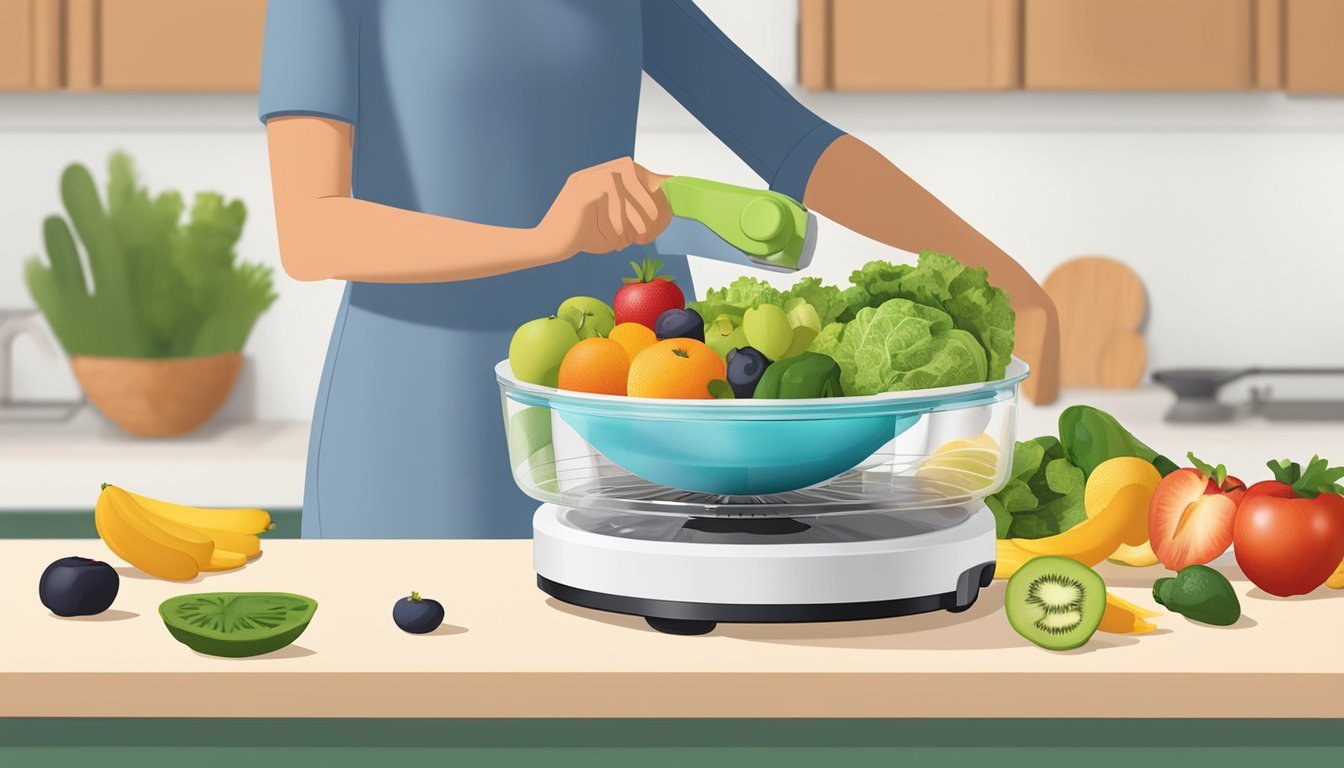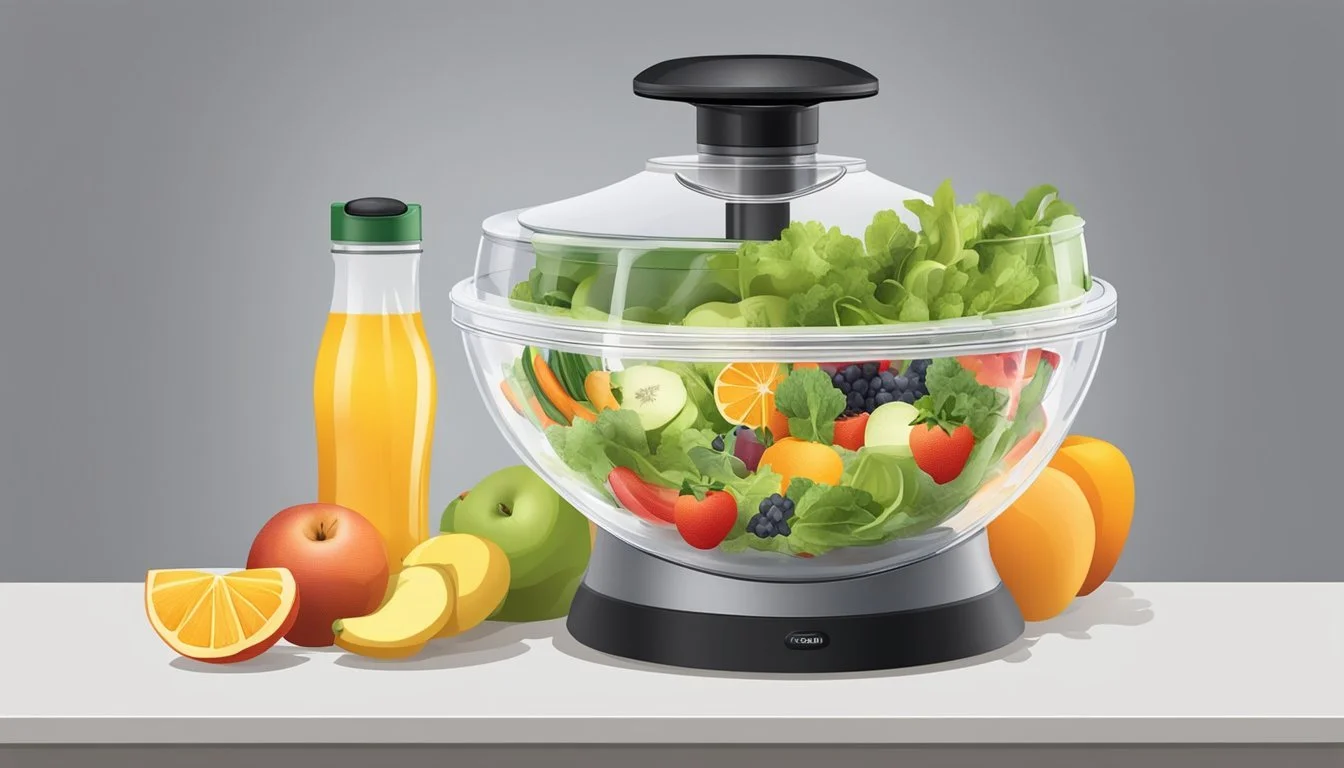How to Use a Salad Spinner Beyond Lettuce
Versatile Kitchen Hacks
A salad spinner is a versatile kitchen tool that reaches far beyond its name, opening up a world of culinary possibilities. Originally designed to dry washed lettuce quickly and efficiently by using a centrifugal force mechanism, this gadget has proven to be a surprising ally in various tasks across the kitchen. Its simple design, usually a basket that sits within a bowl and is operated by a push-button or crank handle, belies the multitude of uses savvy cooks have found for it.
Beyond leafy greens, a salad spinner can handle a wide array of ingredients, offering a gentle and effective way to wash and dry. Chefs can rinse grains such as rice or quinoa to clear away excess starch before cooking, ensuring a fluffier final dish. Similarly, it can be an asset when preparing finer ingredients like fresh herbs, which need tender handling and thorough drying to maintain their structure and potent flavors.
Moreover, salad spinners are not limited to just washing; they can also be instrumental in the drying process of various foods post-cooking. Noodles and pasta can be given a quick spin to shed unwanted water, preventing diluted sauces and ensuring a hearty, flavor-packed meal. The ability to expel moisture from ingredients rapidly makes the salad spinner an indispensable kitchen tool for more than just salad prep.
Understanding Salad Spinners
A salad spinner is an essential kitchen tool designed to wash and dry leafy greens efficiently. Its clever design allows it to also perform a number of other tasks in the kitchen, showcasing its versatility beyond just preparing salads (What wine goes well with salads?).
Components of a Salad Spinner
A typical salad spinner consists of three main components:
The Basket: Resembling a colander, it is where the greens or other food items are placed. The holes allow water to be spun out during operation.
The Bowl: This outer bowl acts as a container to hold water and catch it as it drains from the basket.
The Lid: Equipped with a mechanism—often a pump or a pull-cord—that when activated, causes the basket to spin.
The Mechanics of a Salad Spinner
The operation of a salad spinner is based on the principle of centrifugal force. When the mechanism on the lid is engaged (either by pressing a pump or pulling a cord), it sets the basket inside the container into rapid motion. This creates a force that drives the water out through the basket's holes, effectively drying its contents while the outer bowl catches any expelled water.
Pump-Operated: Pushing down on the pump causes the basket to spin. A button usually stops the spinning when needed.
Pull-Cord: A quick tug on the cord initiates the spin, much like starting a lawnmower.
By understanding these components and mechanics, users can effectively operate a salad spinner and explore its various applications in the kitchen.
The Basics of Using a Salad Spinner
A salad spinner is essential for ensuring greens are clean and moisture-free. The device uses centrifugal force to remove excess water, so dressings adhere better to the leaves.
Properly Washing and Preparing Greens
Begin by removing any damaged leaves and cutting or tearing the remaining greens into desired sizes. Submerge the greens in a bowl of cool water, allowing dirt and debris to settle at the bottom. Gently lift the greens out of the water, leaving the grit behind, and place them in the spinner's basket.
Spinning to Dry
Position the basket back into the salad spinner, secure the lid, and spin the handle or push the pump. The force generated by the spinning motion flings the water off the greens, clinging to the sides of the outer bowl. After several spins, check for moisture, and if the greens are still wet, spin again.
Additional Tips for Effective Use
Balance: Ensure the greens are evenly distributed in the basket to avoid wobbling.
Speed: Start with a slow spin to prevent bruising, then increase speed gradually.
Quantity: Don't overcrowd the spinner; work in batches if necessary for effective drying.
Dryness: Greens should be dry to the touch but not wilted. Excess moisture can dilute dressings and make salads soggy.
Beyond Lettuce: Other Uses for Salad Spinners
Salad spinners are commonly associated with drying lettuce, but these handy kitchen tools are versatile enough to benefit a wide range of foods. Here's how to put them to good use beyond prepping your greens.
Drying Other Vegetables
Broccoli and cauliflower can harbor water in their florets after washing, making them soggy when cooked. To ensure these vegetables maintain their texture and don't steam in excess water when stir-fried or roasted, a salad spinner can be used to effectively remove moisture.
Leeks: Often filled with dirt between their layers, leeks require thorough cleaning. Slice them first, rinse to remove any loose dirt, and then use the salad spinner both to soak them and spin them dry, ensuring they are clean and ready for your recipes.
Drying and Cleaning Beans and Legumes
The salad spinner can also serve to rinse and dry beans and legumes. After soaking and before cooking, it’s beneficial to remove any residual water to prevent dishes from becoming watery.
Beans: Place soaked beans into the spinner to shed excess water.
Lentils and other small legumes: A quick spin helps to ensure they are clean and water-free.
More Creative Uses for Your Salad Spinner
Salad spinners can be creatively repurposed beyond just cleaning and drying produce.
Berries: Gently rinse and dry delicate berries to prevent them from becoming moldy quickly due to retained water.
Cooking: Remove excess water from cooked pasta to ensure sauces adhere better, without dilution.
Using the spinner outside the realm of salads offers an ingenious way to maximize your kitchen tools, all while maintaining the integrity and flavor of your vegetables, produce, and other food items.
Choosing the Right Salad Spinner
When selecting a salad spinner, the buyer should prioritize functionality, durability, and versatility. These factors determine the suitability of the product for a range of kitchen tasks beyond just drying lettuce.
Factors to Consider When Purchasing
One should consider several key elements to ensure they choose an effective salad spinner:
Capacity: Size matters depending on one's needs; larger families may require a spinner with a greater volume.
Material: Durable materials like high-grade plastic or stainless steel ensure longevity.
Ease of Use: Look for a spinner with an ergonomic design and a smooth spinning mechanism.
Versatility: Some models double as a colander or serving bowl.
Price: Salad spinners vary in prices, and one must consider if the cost aligns with the quality and features offered.
Top Brands and Products
Leading brands have forged strong reputations with their salad spinner offerings:
OXO: Renown for the Good Grips model that combines a non-slip base with an easy-to-use pump action.
Zyliss: Known for robust build quality and efficient spin mechanisms.
Brand Model Notable Feature OXO Good Grips Non-slip base, pump mechanism Zyliss Easy Spin Pull-cord system, lockable lid
Where to Buy Salad Spinners
Shoppers can find salad spinners through various retail channels:
Retail Stores: Kitchen supply stores often carry an array of brands and models.
Online Marketplaces:
Amazon: Offers a wide selection, price comparison, and user reviews.
Independent kitchenware websites may offer exclusive products or special deals.
When purchasing, buyers may also encounter the option of affiliate links, which can result in a commission for the recommender at no extra cost to the buyer.
Maintenance and Care
Proper maintenance of a salad spinner not only extends its lifespan but also ensures it functions effectively every time it's used. This involves regular cleaning and appropriate storage.
Cleaning Your Salad Spinner
After each use, dismantle the salad spinner into its components - the outer bowl, inner basket, and lid. These parts should be soaked and washed with warm soapy water to remove food particles and residues. It's crucial to dry the lid and inner basket with a soft cloth or paper towels to prevent water spots and to maintain the spinner's mechanics.
Lid: If it's a manual spinner, detach any removable parts and clean each piece separately.
Inner Basket: This should be rinsed thoroughly to ensure no food remains. A gentle scrub can be used for stubborn residue.
Outer Bowl: Can be used as a mixing bowl but should be cleaned similarly to the basket after use.
Storing the Salad Spinner
Once the spinner is clean and dry, it should be stored in a dry place to prevent mildew or mold growth. If space is a concern, the spinner can be nested to fit compactly within kitchen cabinets.
Avoiding Compression: Don't store heavy items on top of the salad spinner to prevent warping or damage.
Ventilation: Ensure there is adequate air circulation where the spinner is stored to keep it dry and ready for use.
Innovative Kitchen Uses
The salad spinner emerges as a multipurpose tool in modern kitchens, enhancing the efficiency of meal preparation and providing unique solutions for handling various ingredients.
Preparing Ingredients for Recipes
A salad spinner simplifies the meal prep process by ensuring ingredients are cleaned and ready for use. For herbs, a gentle spin removes water without bruising delicate leaves. Dried beans benefit from an initial rinse in the basket to remove any surface dirt before soaking. When preparing hash browns, washing the shredded potatoes and then spinning them dry ensures a crisper outcome.
Creative Meal Prep Ideas
Salad spinners offer clever techniques for meal prep beyond greens. Pasta can be spun to remove excess water, helping sauces to adhere better. Users can rinse chicken pieces before marinating to ensure they're clean and water-free. Vegetables like eggplant and zucchini can be salted and then spun, drawing out moisture and making them firmer for cooking.
Fun and Unconventional Uses
Beyond the expected, one can find delight in the unconventional functions of a salad spinner. They can damp-dry french fries after rinsing to remove excess starch for a crispier fry. It also serves as a gentle spinner for removing excess juice from grated apples when making pie fillings or from berries for decorative cake toppings.
Tips for Buying Fresh Produce
When selecting and storing fresh greens, key considerations include where to purchase and how to properly clean them to maintain their quality and longevity.
Selecting Greens at the Market
At a farmer’s market, one finds the advantage of accessing freshly-harvested greens, which are likely to have retained more of their nutrients and flavor. It is advisable to:
Inspect the leaves for vibrant color and crisp texture; these are indicators of freshness.
Avoid greens with noticeable wilting, yellowing, or slimy patches.
Ask vendors about the harvest date. The fresher the produce, the longer it will last after purchase.
Storing and Washing Fresh Greens
Proper storage and cleaning are critical for preserving the quality of fresh greens. Here’s what one should do:
Refrigerate the greens in a loose plastic bag with a paper towel to absorb excess moisture.
Prior to use, wash the greens. Remove any damaged leaves, and then soak the good leaves in a bowl of cold water to loosen dirt.
For washing greens:
Place greens in the basket of a salad spinner.
Submerge the basket in water to allow dirt to sink to the bottom.
Lift the basket, let the water drain, and repeat if necessary.
After washing, spin the greens to remove all excess moisture.
Properly cleaned and stored greens will be crisp, healthy, and ready for use, whether in a salad or for cooking purposes.
Other Helpful Kitchen Tools
Salad spinners serve as a cornerstone in the kitchen, not only for drying lettuce but also for a variety of tasks. To fully leverage a salad spinner's versatility, complementing it with other specific kitchen tools can enhance one's culinary experience.
Complementary Tools for Salad Making
Colanders: Essential for draining washed fruits and vegetables, they can also be inverted to use as a steaming basket for greens.
Knives: A sharp chef's knife is crucial for chopping ingredients uniformly, a key to salad presentation and texture.
Peelers: They streamline the process of skinning cucumbers or carrots, ensuring thin, even strips for salads.
Multipurpose Tools for Everyday Cooking
Food Processors: These gadgets excel at slicing, dicing, and pureeing ingredients for quick meal prep.
Mandolines: They provide precision cuts for vegetables, aiding in the creation of visually appealing and evenly cooked dishes.
Microplane Graters: Ideal for zesting citrus, grating cheese, or creating fine shavings of chocolate to garnish a variety of dishes.
Pairing a salad spinner with these tools not only economizes time but also expands a cook's capability to handle diverse culinary tasks with ease.
Conclusion
A salad spinner emerges as a versatile kitchen tool, transcending its traditional role. Its primary function of drying leafy greens is undisputed, yet it offers a range of additional uses which can elevate one's culinary preparation efficiency. Employing a salad spinner to remove water from freshly washed herbs ensures their longevity and readiness for cooking or storage. The careful removal of seeds from tomatoes and drying cooked pasta demonstrate its adaptability beyond leafy greens.
When utilizing the salad spinner for alternative uses, one should proceed with the same level of confidence they possess when preparing a classic salad. They have the assurance that this tool can safely and effectively handle different ingredients, as long as those ingredients fit within the basket and can withstand the spinning motion.
One should remember that while their salad spinner is a helpful companion in the kitchen, it may not be suitable for all tasks, and delicate items should still be handled with care. The evolution of the salad spinner into a multi-use gadget reflects the ingenuity of home chefs and the potential of kitchen tools to adapt to various needs.
In conclusion, the salad spinner is not confined to its conventional role. By understanding and applying its functions creatively, they maximize its value, thereby enhancing their kitchen efficiency and exploring new culinary possibilities in a clear, straightforward manner.





